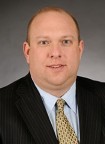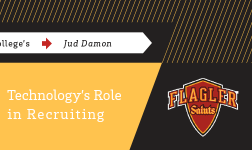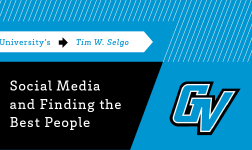Athletic Director,
Morehead State University.
Brian Hutchinson became Morehead State University’s ninth Director of Athletics in 2005. Under Hutchinson’s leadership, the athletic department has seen major improvements in facilities, student-athlete performance, and staffing level. He was instrumental in the department’s renovations and during his tenure MSU’s men’s basketball, volleyball, soccer, football and women’s golf teams have won conference championships.
Mr. Hutchinson was good enough to offer Winthrop Intelligence some thoughts on coaching change and the role of technology in college athletics.
Often scrutiny and second guessing—by the media, by your institution, and now researchers—is heaviest at the time of a firing rather than at the time of a hire. What aspects (ticket sales, fund raising, recruiting) of the process does the media not see?
The media rarely knows the entire story regarding hirings and firings. All of the aspects you mentioned are important, but generally one can just observe a program and determine if the players are executing a game plan and if that game plan is well-reasoned. Sometimes exit interviews done with departing players can play a role. Those are important because questions are asked and answered about the day-to-day happenings inside a program that no one really sees. A great deal can be gleaned from that information.
Given the dollar amounts in play to fire a coach, then hire a new coach, what process do you utilize to examine the new coach’s ability to have more success than their predecessor?
Clearly, we wouldn’t make a change unless we felt the need to improve our performance and/or our team discipline, or in the case of rules violations. That doesn’t mean that our young people are in trouble, but it does mean that we want them to approach their studies and their athletic effort with a certain level of performance. We identify the issues within that program, determine the profile of a coach that we might be interested in, and go through a process that would allow us to ascertain if that person fits our needs. I’d have to be certain that a change would matter before I made the move.
When determining the length of a contract for a new coach, how do you balance the need for long term job security (recruiting perception) against a possibly shorter timeline to get results on the field?
I think it is fair for any coach to come in and have a reasonable expectation that they will have enough time to do the job. For us, we typically look at an initial four year term. We also don’t pay out mega-contracts, so security can offset that and keep us within some semblance of the market.
What is one challenge that your program has overcome and one challenge you see in the future you’d like to overcome? What aspect of your tenure at Morehead State University are you most proud of?
Morehead State had been perceived for a long time to be a program that was sort of stuck. We hadn’t had a lot of on-field or on-court success, and I believed we were capable of much more. Men’s basketball is a tremendous driver for us and we have had a great deal of success in the NCAA tournament over the last four years or so.
I think I’m most proud of taking a program that had not been to the NCAA tournament in any sport since 1984, to multiple berths in men’s basketball and women’s soccer, and appearances by women’s golf and women’s volleyball. We have a very well-rounded program and I will always be able to look at my tenure as one where we’ve executed a plan that helped us get to that level. Additionally, we’ve won our conference’s academic achievement award every year but one, in my nine years on the job.
How has Win AD impacted the planning and the execution of goals for Morehead State Athletics?
Win AD is an invaluable tool in measuring what’s really out there, not what we think is out there. The data provided, as well as the analysis of that data, has more than paid for our investment. I can’t imagine making some of the decisions we’ve had to make without the platform.





